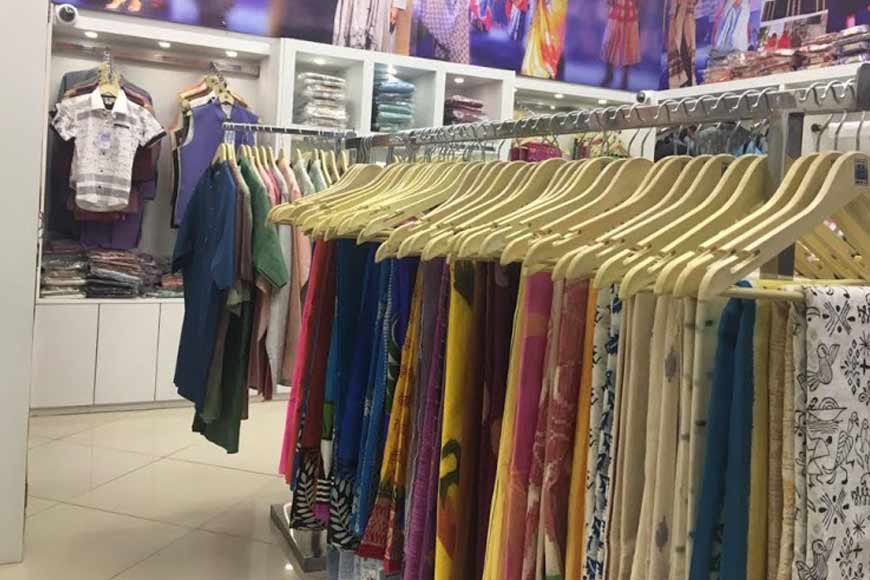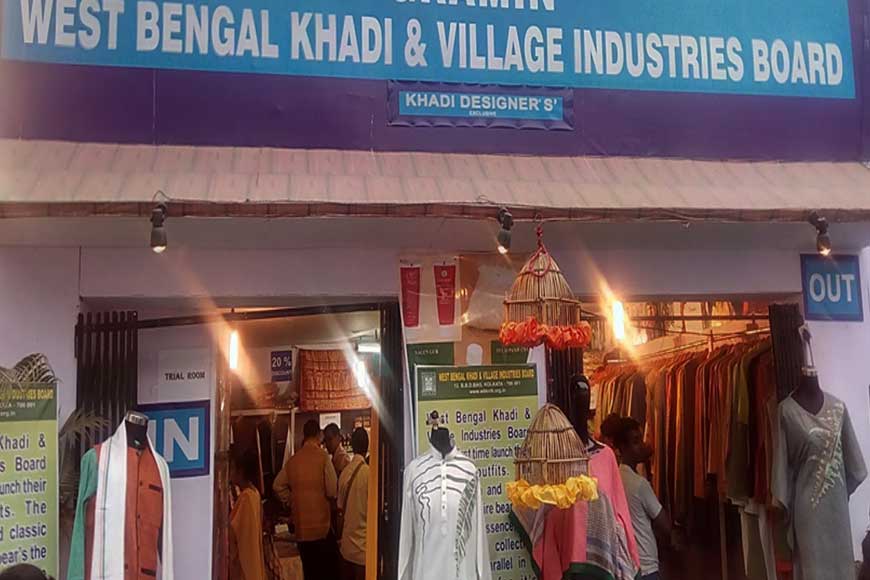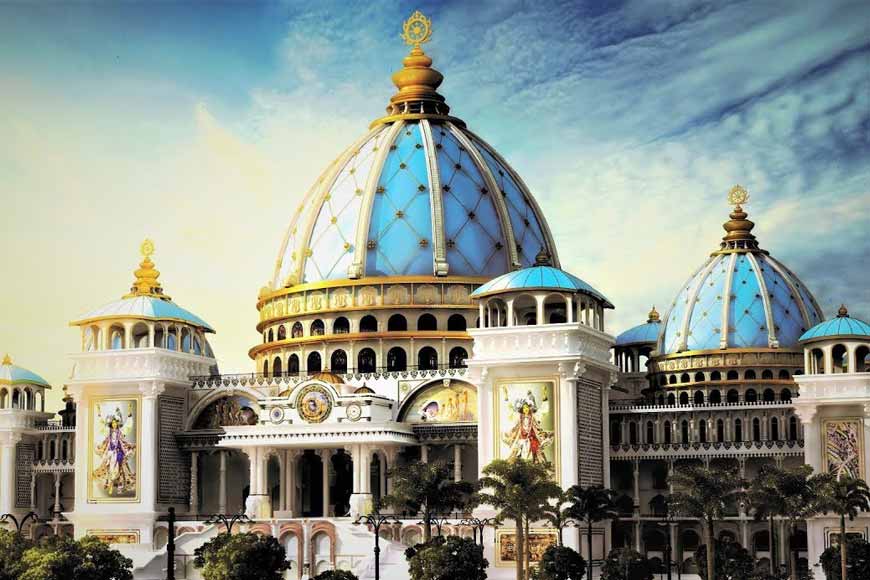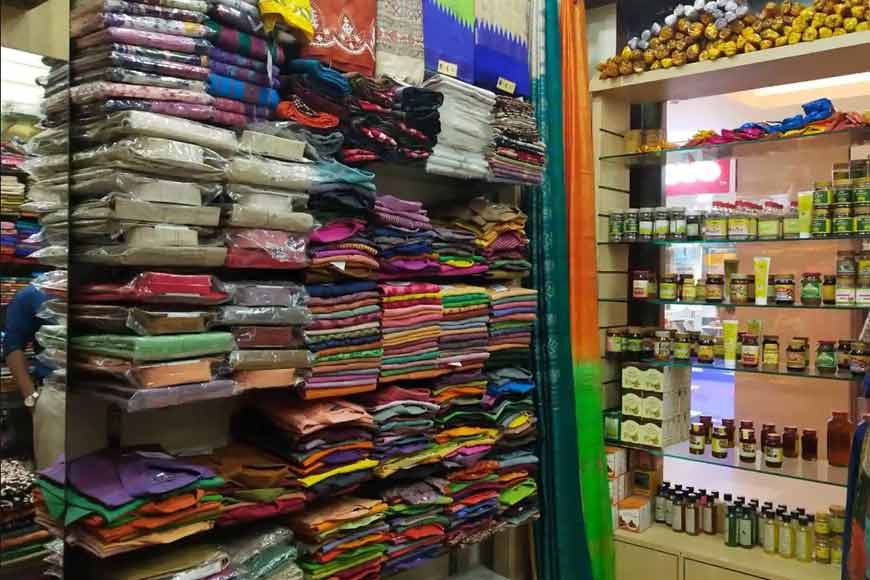WB Government to set up Khadi outlets at temple premises

Mayer deowa mota kapor mathaye tuley ne re bhai/ Deen dukhini Ma je toder taar beshi aar saddhyo nai….(Rajanikata Sen)
(Brothers, please accept with gratitude the coarse cloth offered by your mother because your poor despondent mother cannot afford anything better)
‘Mota Kapor’ here is synonymous with Khadi or khaddar, a term used for fabrics that are hand-spun and hand woven, usually from cotton fiber. However, contrary to popular belief, khadi is also manufactured from silk and wool, known as khadi silk or woolen khadi respectively. The fabric is known for its rugged texture, comfortable feel and ability to keep people warm in winter and cool during the summer.
West Bengal is a rich treasure trove of myriad folk arts and traditions spread across the length and breadth of the state. Some of what one would consider craftwork, but is truly art, includes painstakingly woven Baluchari sarees that would adorn the ladies of the court, masks that drape performers of Rono-nrittya (war dance), the delicate muslin that would cause wars among kingdoms, and more. It would not be remiss to note that the culture and history of Bengal is heavily influenced by the artworks of these great men and women who endured bloody fingers, angst of the soul, and countless sleepless nights in the pursuit of beauty.

The West Bengal Khadi and Village Industries Board works for the promotion of these diverse traditional crafts that originate and thrive in specific geographical locations of rural Bengal. In a recent move, the government has taken a special drive to set up khadi garment outlets in all temple precincts in the state. The first of its kind in the country, this initiative by state Chief Minister, Ms Mamata Banerjee aims to create a large and diverse market for khadi and other traditional village crafts, by linking it with the religious tourism circuit in Bengal.
The first outlet will be set up at Mayapur, in the premises of the new ISKCON temple. Following this, other outlets will be set up at Dakshineswar, Adyapith, Kalighat, Tarapith, Kankalitala, Kanakdurga temples as well as all the famous pilgrimage sites.

Khadi or khaddar is synonymous with Mahatma Gandhi and the Swadeshi movement he led. He was the one who saw its potential as a tool to being self-reliant and bringing villages back to life. He categorically mentioned, “The spinning wheel represents to me the hope of the masses. The masses lost their freedom, such as it was, with the loss of the Charkha. The Charkha supplemented the agriculture of the villagers and gave it dignity.’ However, Gandhi was quick to realize that more than the production and sale of this hand-woven fabric, it’s the acceptance of the very fabric in our own daily lives that will bring the change. Hence, Gandhi made the Swadeshi Movement synonymous with khadi. He promoted its simplicity as a social equalizer and made it the nation’s fabric.
“If we have the ‘khadi spirit’ in us, we would surround ourselves with simplicity in every walk of life. The ‘khadi spirit’ means illimitable patience. For those who know anything about the production of khadi know how patiently the spinners and the weavers have to toil at their trade, and even so must we have patience while we are spinning ‘the thread of Swaraj.”
The ‘khadi spirit’ as Gandhiji interpreted was “fellow-feeling with every human being on earth. It means a complete renunciation of everything that is likely to harm our fellow creatures, and if we but cultivate that spirit amongst the millions of our countrymen, what a land this India of ours would be! And the more I move about the country and the more I see the things for myself, the richer, the stronger is my faith growing in the capacity of the spinning wheel.”
Introduced with the intention of boycotting foreign goods, khadi became a national movement under Gandhiji. All India Spinners Association was launched with the intention of propagation, production and the selling of khadi in 1925. Techniques were improved upon, and employment to the scale of two lakh was created. After Independence, the movement continued, and the All India Khadi and Village Industries Board was created, which later culminated in the formation of Khadi, Village and Industries Commission. KVIC today is responsible for the planning, promotion, organization and implementation of programmes for the development of khadi and other village industries in rural areas with the coordination of other agencies in rural development wherever necessary.

Since independence, the journey of khadi has been about maintaining a balance between traditions and modernity. Khadi stands for what’s traditional, but every tradition has to undergo change to stay relevant. Khadi has seen a new wave of acceptance thanks to many fashion designers like Sabyasachi Mukherjee, Ritu Kumar and Rohit Bal, to name a few. Brands like Fab India and Nature Alley have made their name with khadi products.
The state government’s decision to take proactive decision to expand the reach of Khadi and other village crafts of Bengal is significant in the current political situation in Bengal and the national arena.










